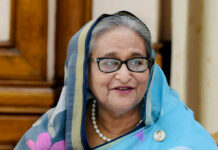Bangladesh market stokes South Asia’s snub
A consumer growth play
The country’s population of over 150 million with a median age of 25 is often pitched as a consumer growth play, with auto, healthcare and smart phone providers among popular stock exchange listings. Honda joined other foreign operators to recently set up a motorcycle factory, and a local competitor will launch a public equity offering in the coming months. Samsung announced it will soon assemble phones for the domestic market, and also manufacture appliances like refrigerators still yet to become standard household items. Pharmaceuticals companies like heavyweight Beximco register double-digit earnings increases, and are expanding abroad regardless of dedicated government strategy or support, with applications on file with the US Food and Drug Administration.
Infrastructure projects, including the Padma Bridge between the capital and southwest and the Dhaka-Chittagong Highway extension, will boost commercial vehicle sales growing 20% annually and tourism both from Western and Asian visitors. Big hotel chains Hilton and Marriott are in place, and more affordable outlets are opening for middle-class Chinese and Indian visitors.
Bad loan levels and management at leading state banks still threaten the system, and the International Monetary Fund in its 2018 Article IV report urged faster action with problems festering for a decade
Bad loan levels and management at leading state banks still threaten the system, and the International Monetary Fund in its 2018 Article IV report urged faster action with problems festering for a decade. The administration did not preview course shifts in the election run-up, and private sector competitors have diversified into new business lines and mobile money to survive. Digital payments applications are in the startup phase, and new lending and retail entrants have already emerged to challenge traditional banking franchises in a country where account penetration is limited.
In Sri Lanka bank valuations are already below book value amid monetary and political uncertainties, with IMF program review on hold until the government is restored or new elections as the president, parliament and supreme court clash over constitutional practice for dismissing the prime minister. Fiscal and current account deficits continue to trigger concern, with the latter approaching 4% of gross domestic product. Portfolio outflows, with 15% currency depreciation against the dollar, further shrank reserves to $8 billion in October. The central bank raised benchmark rates in November in a tightening pattern that will likely last and keep growth at the 3% level. Pakistan likewise runs large twin deficits against the background of higher interest rates and a tumbling currency. As the new Imran Khan government negotiates another Fund agreement estimated in the $5 billion range, sub-region stocks are not yet poised for a bad news bounce.










